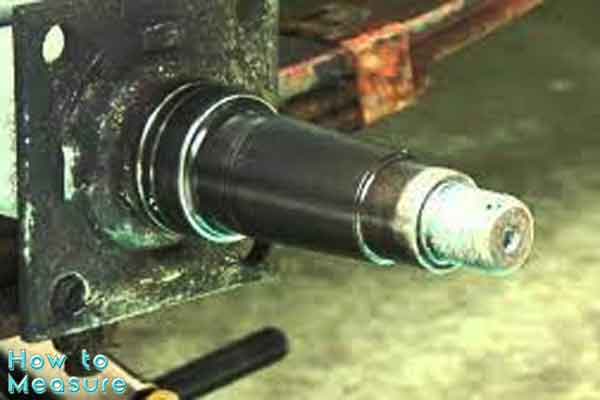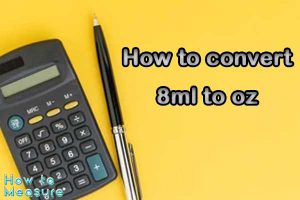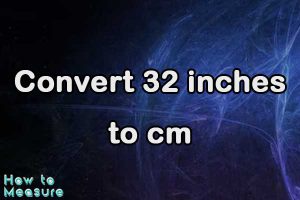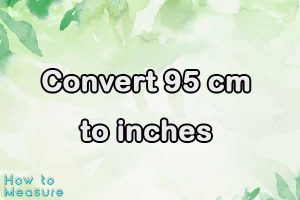If you’re a trailer owner, it’s important to know the size of your trailer’s hub, as it determines the type of wheel bearing and replacement parts you need. Measuring your trailer hub size may seem daunting initially, but it’s a straightforward process with the right tools and a little know-how. This guide will take you through the steps to accurately measure your trailer hub size, including the tools you’ll need and how to identify key measurements. By the end, you can confidently measure your trailer’s hub size and find the right parts for maintenance or repairs.
What tools do I need to measure my trailer hub size?
You will need a few basic tools to measure your trailer hub size. Here’s what you’ll need:
- Tape measure: You’ll need a tape measure to measure the diameter of your trailer hub and the distance between the wheel studs.
- Vernier caliper or micrometer: A digital or manual vernier caliper or micrometer is needed to measure the precise diameter of the hub’s center bore, which is the hole in the center of the hub.
- Wheel stud gauge: A wheel stud gauge can help you accurately measure the distance between the wheel studs. This tool has a series of pins corresponding to various bolt patterns, making it easy to identify your trailer’s bolt pattern.
- Pen and paper: You’ll need a pen and paper to write down your measurements and keep them organized.
- Safety equipment: It’s important to wear gloves and eye protection while working on your trailer to avoid injury.
- Bearing packer: This tool can help you pack new bearings with grease before installing them.
With these tools, you can accurately measure your trailer hub size and identify the correct replacement parts.
How do I measure the bolt pattern on my trailer hub?
To measure the bolt pattern on your trailer hub, follow these steps:
Remove the wheel from the trailer hub.
Measure the diameter of the circle that passes through the center of each wheel stud using a tape measure. Be sure to measure from the center of one stud to the center of the stud opposite it, as this will give you the most accurate measurement.
Count the number of wheel studs on the hub. Most trailer hubs have either 4 or 5-wheel studs.
Use a wheel stud gauge to measure the distance between the wheel studs. Place the gauge over the studs, ensuring the pins on the gauge correspond to the center of each wheel stud. The gauge will tell you the bolt pattern and the distance between the centers of two adjacent studs on the hub.
Write down the diameter of the circle and the bolt pattern measurements. These measurements will help you identify the correct replacement parts for your trailer hub.
Accurately measuring the bolt pattern ensures the replacement parts fit properly. If you need help with measuring the bolt pattern or you need help getting an accurate measurement, consider taking your trailer to a professional mechanic or trailer service center for assistance.

What is the difference between hub bore and stud diameter, and how do I measure them?
The hub bore and stud diameter is two important measurements regarding trailer hubs. The hub bore is the hole in the center of the hub where the axle fits through, and the stud diameter is the size of the holes where the wheel studs fit in. Here’s How to measure both:
Measuring Hub Bore:
- Remove the wheel from the hub.
- Measure the diameter of the hub bore using a digital or manual caliper. Be sure to measure across the widest point of the hole.
- Write down the measurement.
Measuring Stud Diameter:
- Count the number of wheel studs on the hub.
- Measure the diameter of one of the wheel stud holes using a digital or manual caliper. Be sure to measure across the widest point of the hole.
- Write down the measurement.
- Repeat for all of the wheel stud holes.
It’s important to note that when selecting replacement parts for your trailer, it’s essential to match both the hub bore and stud diameter. If the hub bore is too small, the hub won’t fit onto the axle, and if the stud diameter is incorrect, the wheel won’t attach securely to the hub. By measuring both the hub bore and stud diameter, you can ensure that you select the correct replacement parts for your trailer hub.
How do I determine the capacity of my trailer hub?
To determine the capacity of your trailer hub, you’ll need to locate the manufacturer’s label or stamp on the hub itself. This label or stamp should give you the information you need to determine the hub’s weight capacity. Here’s what to look for:
- Find the manufacturer’s label or stamp on the trailer hub. This is typically located outside the hub or the bearing cap.
- Look for the weight capacity rating on the label or stamp. The rating may be in pounds or kilograms, indicating the maximum weight the hub can support.
- Check the rating against your trailer’s weight and the load you plan to carry. The combined weight of the trailer and load should be the hub’s capacity.
Suppose you are still looking for the manufacturer’s label or stamp, or the label needs to be included or legible. In that case, you can also determine the hub’s capacity by measuring the spindle diameter and the length of the spindle. This information can then be used to determine the weight capacity using a chart or formula provided by the manufacturer.
It’s important to ensure that you do not overload your trailer beyond the hub’s capacity, as this can cause serious damage or failure of the hub and lead to dangerous situations on the road.
Can I measure my trailer hub size without removing the wheel?
It is possible to measure your trailer hub size without removing the wheel, but it may not be as accurate as measuring with the wheel removed. Here’s how to measure the hub size without removing the wheel:
- Measure the diameter of the wheel center hole. This measurement should give you a rough estimate of the hub bore diameter.
- Measure the distance between two adjacent wheel studs. This measurement will give you the bolt pattern diameter.
While these measurements may give you a rough estimate of the hub size, it’s important to note that they may need to be more accurate. Removing the wheel allows for a more precise measurement of the hub bore and bolt pattern, which is important when selecting replacement parts for your trailer. If you need help measuring your trailer hub accurately or feel uncomfortable doing it yourself, consider taking your trailer to a professional mechanic or trailer service center for assistance.
Based on my trailer hub size measurements, how do I choose the right replacement parts?
Choosing the right replacement parts for your trailer hub can be a bit complicated, but here are some basic steps to follow based on your trailer hub size measurements:
- Determine the hub bore diameter: Check the measurement you took and compare it to the bore diameter of the replacement hub. Ensure the replacement hub’s bore diameter matches the hub bore diameter of your trailer.
- Determine the bolt pattern diameter: Check the measurement you took and compare it to the bolt pattern diameter of the replacement hub. Ensure the replacement hub’s bolt pattern diameter matches the bolt pattern diameter of your trailer.
- Check the weight capacity: Look for the weight capacity rating on the manufacturer’s label or stamp of your current hub. Choose a replacement hub with a weight capacity that meets or exceeds the weight of your trailer and the weight of the load you plan to carry.
- Consider other factors: If you’re replacing other components, such as brake drums or brake shoes, make sure they are compatible with your chosen replacement hub. Consider the durability and quality of the replacement parts, especially if you frequently tow heavy loads or travel long distances.
It’s important to note that selecting the wrong replacement parts can cause serious damage or failure to the hub and lead to dangerous situations on the road. If you need help deciding which replacement parts to choose, consider seeking the advice of a professional mechanic or trailer service center.
What are the common hub sizes for trailers, and how do I identify which one I have?
Trailer hubs come in a variety of sizes, but here are some common hub sizes for trailers and how to identify them:
4 x 4 inch: This is one of the most common trailer hub sizes, used on many small to medium-sized trailers. To identify a 4 x 4-inch hub, measure the distance between two adjacent wheel studs, which should be approximately 4 inches.
5 x 4.5 inch: This is another common trailer hub size used on many small to medium-sized trailers. To identify a 5 x 4.5-inch hub, measure the distance between two adjacent wheel studs, which should be approximately 4.5 inches.
6 x 5.5 inch: This is a larger trailer hub size, typically used on larger trailers or heavy-duty trailers. To identify a 6 x 5.5-inch hub, measure the distance between two adjacent wheel studs, which should be approximately 5.5 inches.
8 x 6.5 inch: This is a heavy-duty trailer hub size, typically used on larger or equipment trailers. To identify an 8 x 6.5-inch hub, measure the distance between two adjacent wheel studs, which should be approximately 6.5 inches.
In addition to measuring the bolt pattern diameter, you may also want to measure the hub bore diameter to ensure you select the correct replacement parts. If you need help measuring your trailer hub accurately or feel uncomfortable doing it yourself, consider taking your trailer to a professional mechanic or trailer service center for assistance.
| Bolt Pattern (inches) | Number of Bolts | Hub Bore (inches) |
|---|---|---|
| 4 x 4 | 4 | 2.5 – 2.8 |
| 5 x 4.5 | 5 | 2.8 – 3.1 |
| 6 x 5.5 | 6 | 3.3 – 3.6 |
| 8 x 6.5 | 8 | 4.25 – 4.5 |
How do I measure the distance between the wheel studs on my trailer hub?
You can measure the distance between the wheel studs on your trailer hub by following these steps:
- Remove the wheel: Use a lug wrench to remove the nuts and remove the wheel.
- Measure the bolt pattern diameter: Measure the distance from the center of one wheel stud to the center of the stud directly across from it. This is known as the bolt pattern diameter. Measure across two adjacent studs, then multiply the distance by 1.41 to determine the bolt pattern diameter. For example, if the distance between two adjacent studs is 2.75 inches, multiply by 1.41 to get a bolt pattern diameter of approximately 3.88 inches.
- Count the number of studs: Count the wheel studs on the hub. Most trailer hubs have 4, 5, 6, or 8-wheel studs.
- Confirm your measurements: Check your measurements against the manufacturer’s specifications for your trailer to ensure that you have measured correctly and have the correct hub size information.
It’s important to note that accurately measuring the distance between the wheel studs is critical to selecting the correct replacement parts for your trailer hub. If you need help measuring your trailer hub or have any doubts about the accuracy of your measurements, consider taking your trailer to a professional mechanic or trailer service center for assistance.
What are the steps for removing and installing trailer wheel bearings based on hub size?

The steps for removing and installing trailer wheel bearings based on hub size can vary slightly depending on the specific hub and bearing type. Here is a general guide:
- Gather your tools and supplies: You’ll need a jack and jack stand, lug wrench, pliers, screwdrivers, a hammer, grease, replacement bearings, and seals.
- Remove the wheel: Use a lug wrench to remove the nuts and remove the wheel.
- Remove the dust cap: Use pliers or a screwdriver to remove the dust cap from the center of the hub.
- Remove the cotter pin: Remove the cotter pin and loosen the castle nut on the spindle.
- Remove the hub assembly: Remove the hub assembly from the spindle. The hub assembly may require some force to remove, so use a hammer or a rubber mallet to tap it off the spindle.
- Clean the hub assembly: Use a wire brush and clean cloth to remove any dirt or debris from the hub assembly.
- Remove the bearings: Remove the inner and outer bearings from the hub assembly using a bearing puller or other appropriate tool.
- Inspect the bearings: Check the bearings for any signs of wear or damage. If they are damaged, replace them.
- Grease the bearings: Apply a generous amount of bearing grease to the bearings.
- Replace the bearings: Install the new bearings into the hub assembly.
- Replace the seals: Install new seals into the hub assembly, ensuring they are seated properly.
- Reassemble the hub assembly: Reassemble the hub assembly, tightening the castle nut to the proper torque specification.
- Replace the dust cap: Replace the dust cap and tap it into place with a hammer.
- Replace the wheel: Replace the wheel and tighten the lug nuts to the proper torque specification.
It’s important to note that the specific steps and torque specifications can vary depending on the hub and bearing type. Always refer to the manufacturer’s specifications and consult a professional mechanic or trailer service center if you have any doubts or questions about the proper procedure for your trailer hub size.
Conclusion
In conclusion, measuring the size of your trailer hub is an important step in ensuring that you select the correct replacement parts and maintain the safety of your trailer. You will need a few basic tools to measure your trailer hub size, including a tape measure, caliper, and bolt pattern gauge. By measuring the bolt pattern diameter, number of bolts, hub bore, and stud diameter of your trailer hub, you can determine its size and select the appropriate replacement parts. Always refer to your trailer’s manufacturer specifications and consult a professional if you need clarification on your trailer hub size or the replacement parts needed. Proper maintenance and replacement of trailer hubs and bearings can help prolong the life of your trailer and ensure a safe and smooth operation on the road.











